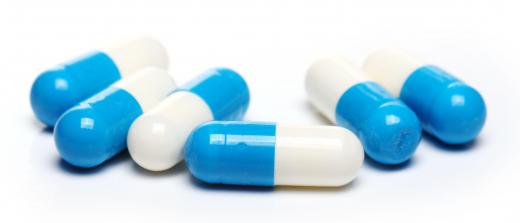Gelatin is the end-product of a series of steps that pull collagen from the hides and bones of animals. There are several different ways to produce gelatin, mostly based on what animal materials are used, but they all follow a basic series of steps. Gelatin production is a complex and time-consuming process, but it is surprisingly easy to do with just a few simple tools and ingredients.
In the Western world, the majority of gelatin production comes from pig skin, but cow skin and several types of animal bones are also used. The high level of pig products stems more from an availability of material than it does from quality or methodology. These materials are drawn from the byproducts of the meat packing and leatherworking fields, but are inspected and cleared for human consumption first.

The material that actually becomes gelatin is collagen. This is only found in high enough concentrations to be useful inside skin and bones. As a result, the first step in gelatin production is cleaning the starter materials. Any leftover debris, such as fat, hair or meat, is thoroughly scrubbed from the skin and bones. This reduces the chance of contaminants, which creates a purer product and easier extraction.

This next part of gelatin production is where the methods begin to diverge. The base material is soaked in a solution, which begins to break down the links between the collagen and other materials using one of three basic soaking methods: acidic, alkaline and enzymatic. Acidic methods for gelatin production typically take one to two days and work the best on pig skin. Alkaline methods can take weeks but will work on nearly any valid material. Lastly, enzymatic processes are somewhat new but work very fast and produce high purity in the few places equipped to use them.
The rest of the gelatin production process is done fairly quickly. After the soak, the collagen is pulled from the base material using water. Alkaline water will pull the material faster, but will also damage the gelatin, so neutral or acidic water is generally used. Heat will also damage the collagen but will generally pull out more material, so washing is done in waves. The process starts with cold water but gradually gets warmer to get as much out as possible.
The last step processes the collagen into full-fledged gelatin. This part of gelatin production varies wildly based on the previous steps, but it typically involves cold temperatures, filtration and air drying systems. Different pH levels and ambient temperatures during soaking have a large impact on the solidity and quantity of the final product.
